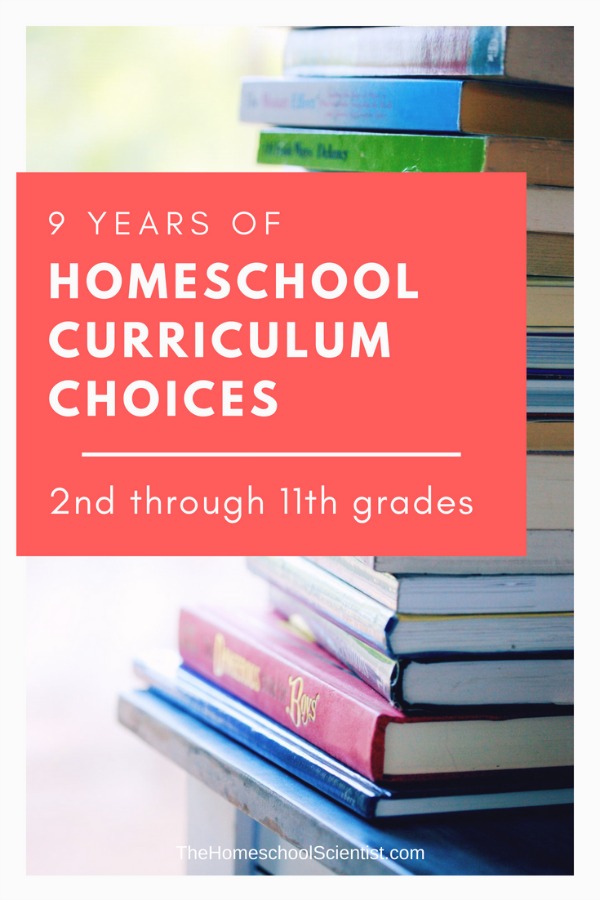9 Years Of Homeschool Curriculum Choices – 2nd Through 11th Grades

There is nothing more stressful for homeschool parents than choosing homeschool curriculum. (Well, except for teaching long division, but that’s for another post.) We want to choose what is best for our kids. I mean, that’s why we homeschool, right?
We ask veteran homeschooling friends what they are using. We read blogs. We check out curriculum at homeschool conventions. We pour over catalogs and websites. I have done the same thing.
Out of all those methods of research, the two that have been most helpful to me have been to ask friends and to read blog reviews. I feel they are more tried-and-tested opinions. And, those suggestions have been the ones that have worked out the best for us.
9 Years Of Homeschool Curriculum
So, here I am with 9 years of homeschooling under my belt. I am still no expert. I don’t have all the answers, but i do know what worked for my kids. Take a peak at our homeschool curriculum choices from 2nd grade to 11th grade and get some ideas.
These might help you confirm some of your choices or want to make some changes. If you have any more questions about any of the resources we have used, feel free to email me.
Favorite Supplemental Homeschool Resources
Over these 9 years, we have used supplemental resources that have been great. Here are a few of our favorites that I actually reviewed or just wrote about.


